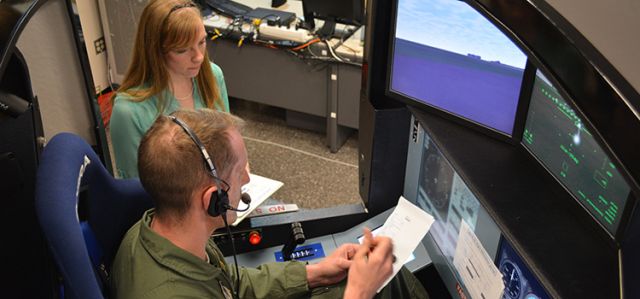Identification of Aircraft by Their Unique Turbulent Wake Signature: Experimental Validation
Document Type
Conference Paper
Publication Date
1-2012
Publication Source
50th AIAA Aerospace Sciences Meeting including the New Horizons Forum and Aerospace Exposition
Abstract
Earlier work on the theoretical foundation for the identification of aircraft by their unique turbulent wake signature is experimentally validated. A brief review of this theoretical foundation will be discussed wherein the drag coefficient can be used to estimate either a Reynolds Stress distribution or [indirectly] a model of the velocity profile of the turbulent wake. A previously unpublished sensitivity study on the conditions of application of the method is included.
This sensitivity reviews the robustness of the method to differentiate between aircraft across a much wider range of cruise and payload conditions than those previously published as well as a few corners where the method could potentially have difficulty differentiating between aircraft. Experimentally, initially the Reynolds stress distribution downstream of a circular cylinder is determined using Particle Image Velocimetry (PIV) in the University of Dayton low speed wind tunnel and those results compared to the predicted Reynolds Stress distribution calculated from the drag coefficient obtained through direct force measurement. Subsequently, the Reynolds stress distribution downstream of a moderate aspect ratio wing obtained through PIV is similarly compared to a predicted Reynolds Stress distribution derived through the drag coefficient obtained from direct force measurement. Finally, a small remote controlled twin engine aircraft is tested with wind-milling propellers and its drag measured from a force balance is used to generate the expected Reynolds stress distribution. This distribution is then compared to the Reynolds stress distribution obtained from PIV downstream of the model where the wake had not yet achieved a self-preserved state.
This prevented a complete demonstration of practical feasibility of the technique; however, several key underlying assumptions of the method are validated.
ISBN/ISSN
978-1-60086-936-5
Copyright
Copyright © 2012, American Institute of Aeronautics and Astronautics
Publisher
American Institute of Aeronautics and Astronautics
Place of Publication
Nashville, TN
eCommons Citation
Ganci, Gabriele; Altman, Aaron; and Rodewald, Joshua, "Identification of Aircraft by Their Unique Turbulent Wake Signature: Experimental Validation" (2012). Mechanical and Aerospace Engineering Faculty Publications. 109.
https://ecommons.udayton.edu/mee_fac_pub/109
COinS




Comments
Permission documentation is on file.